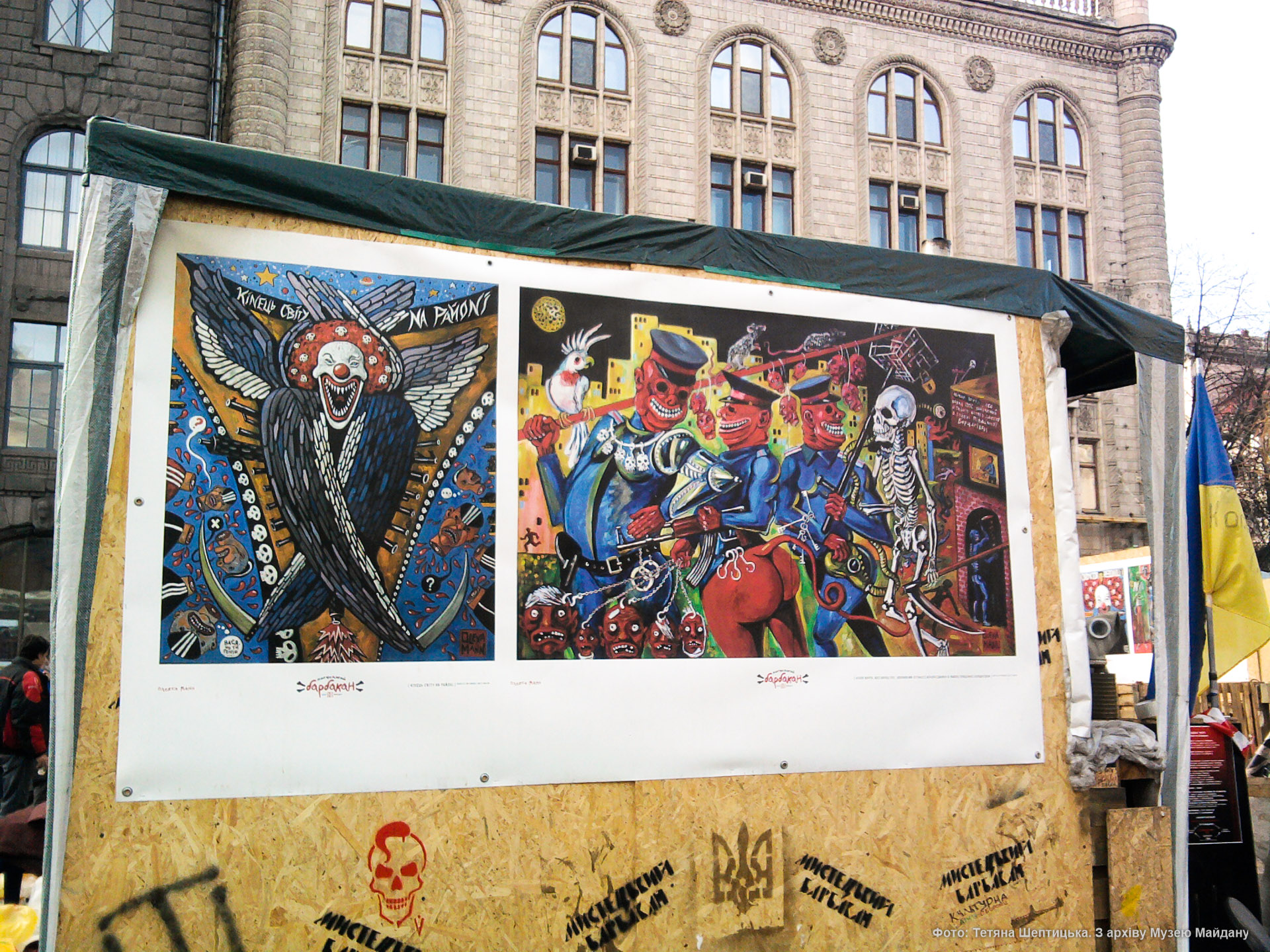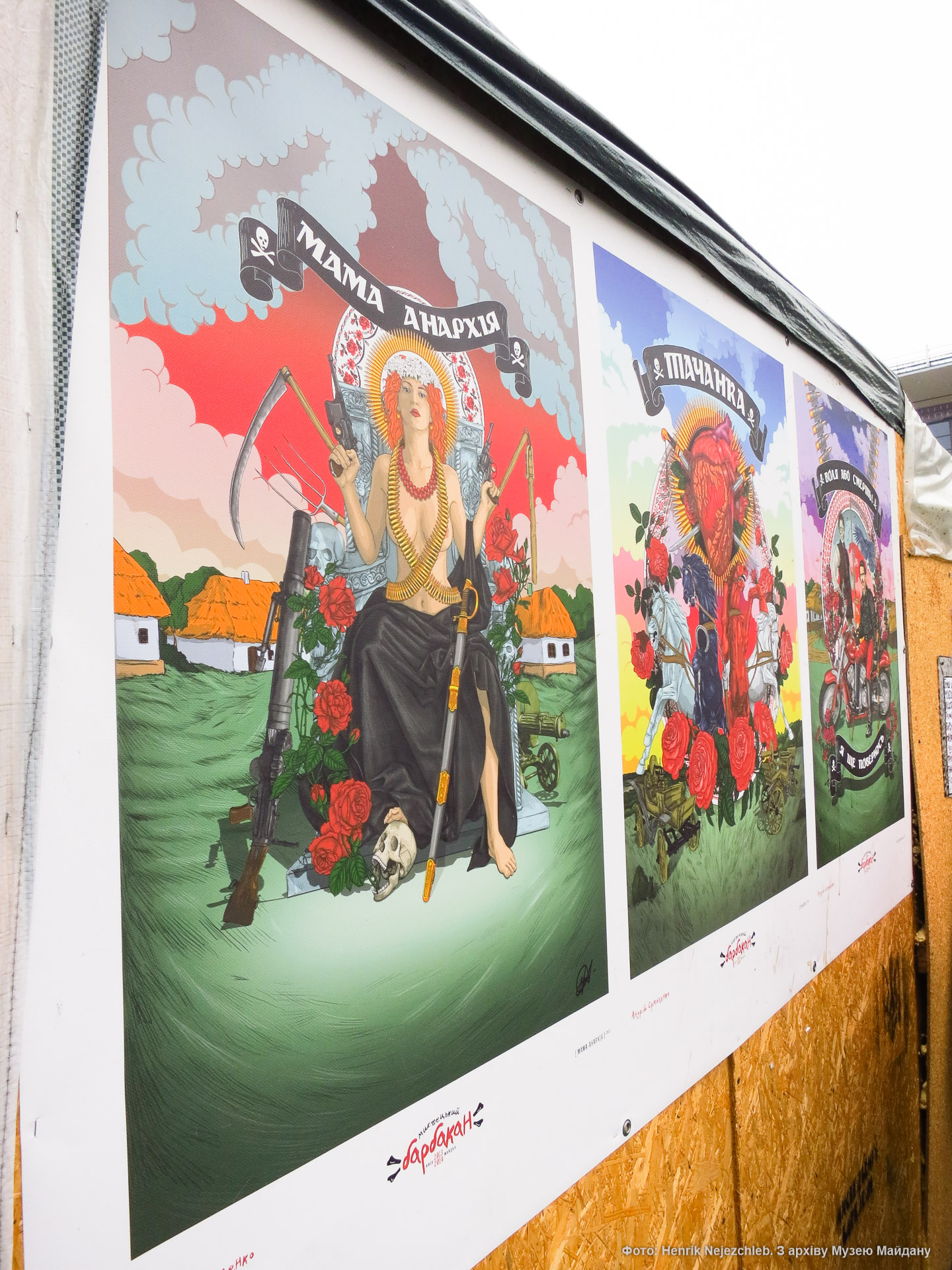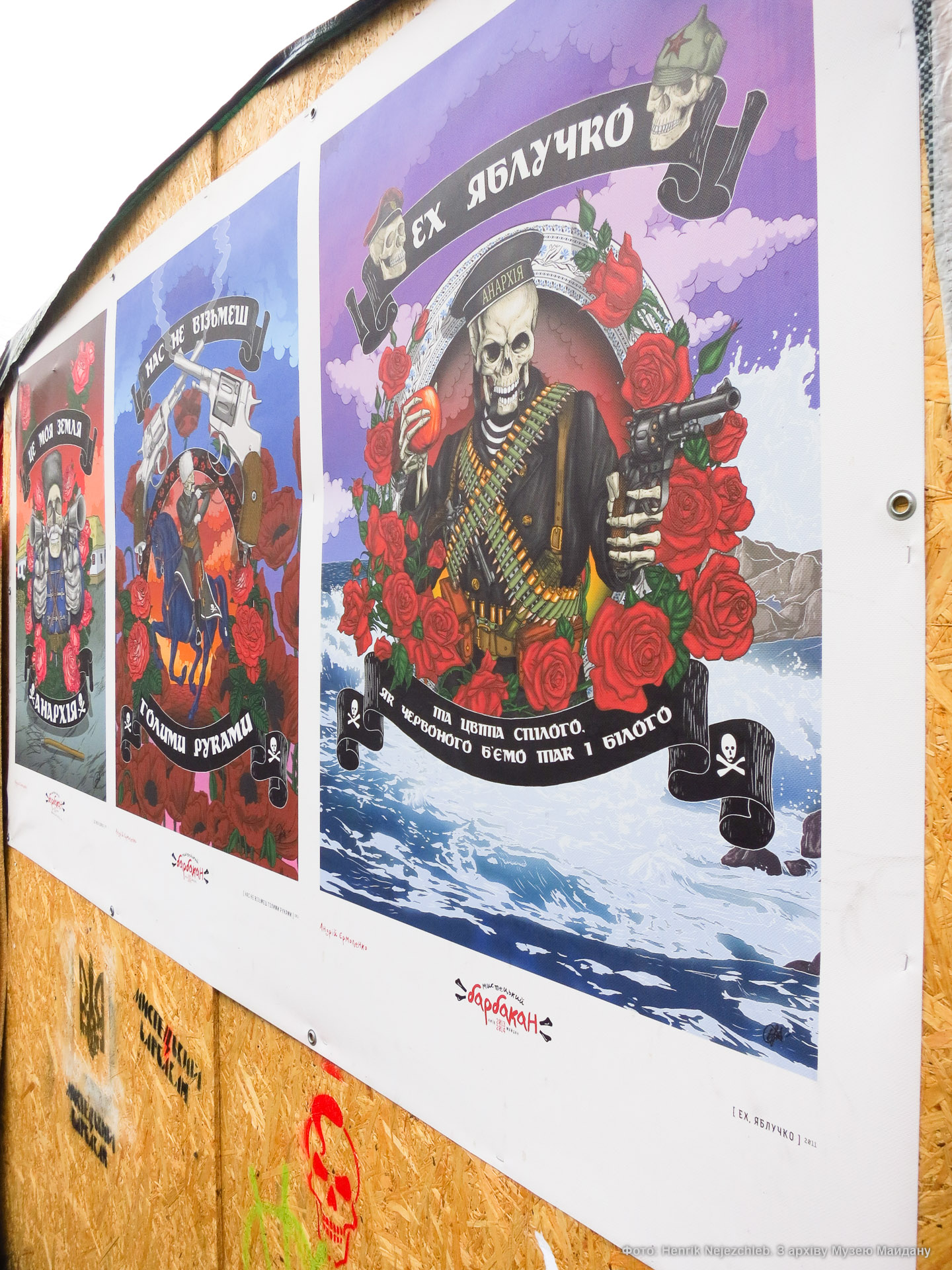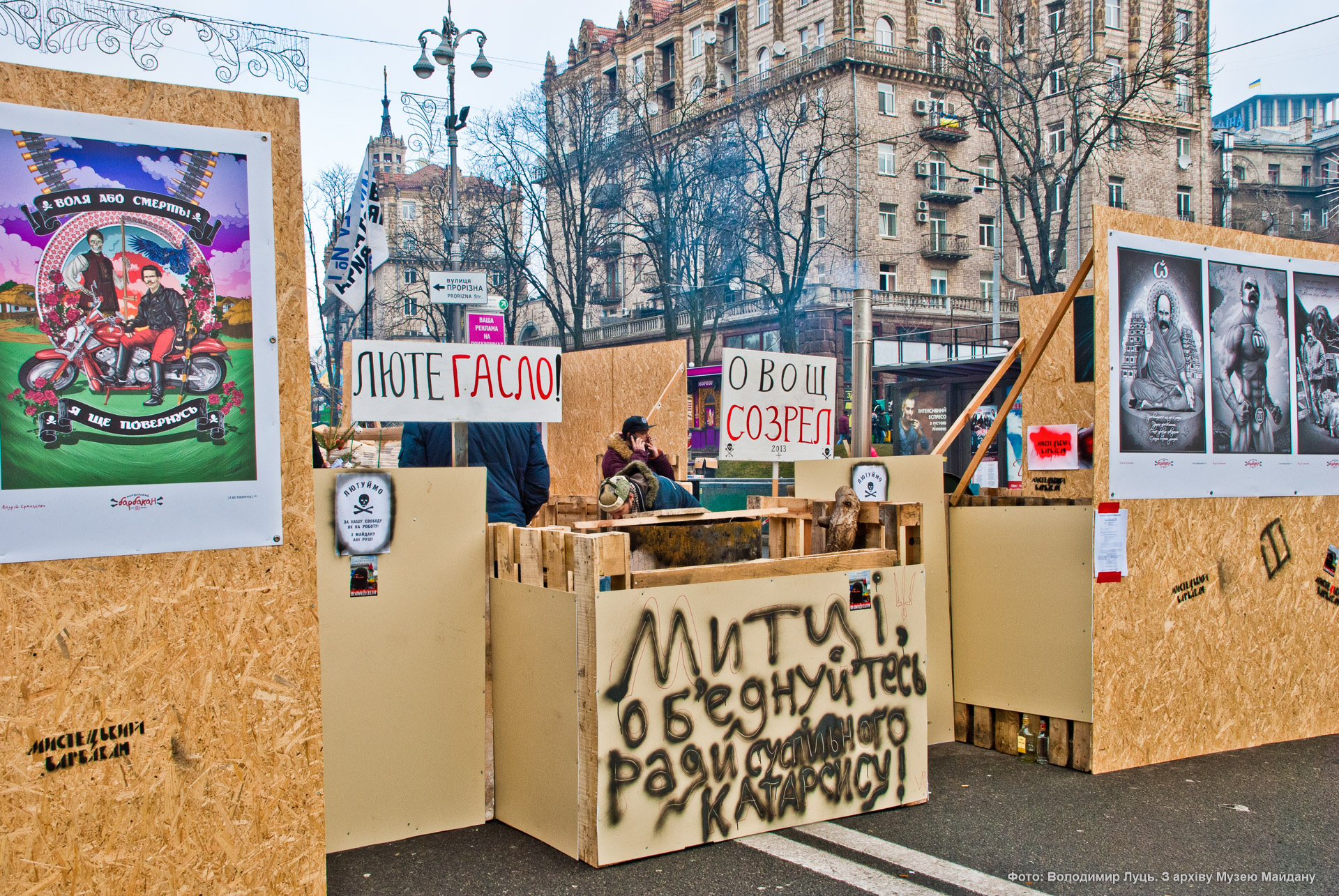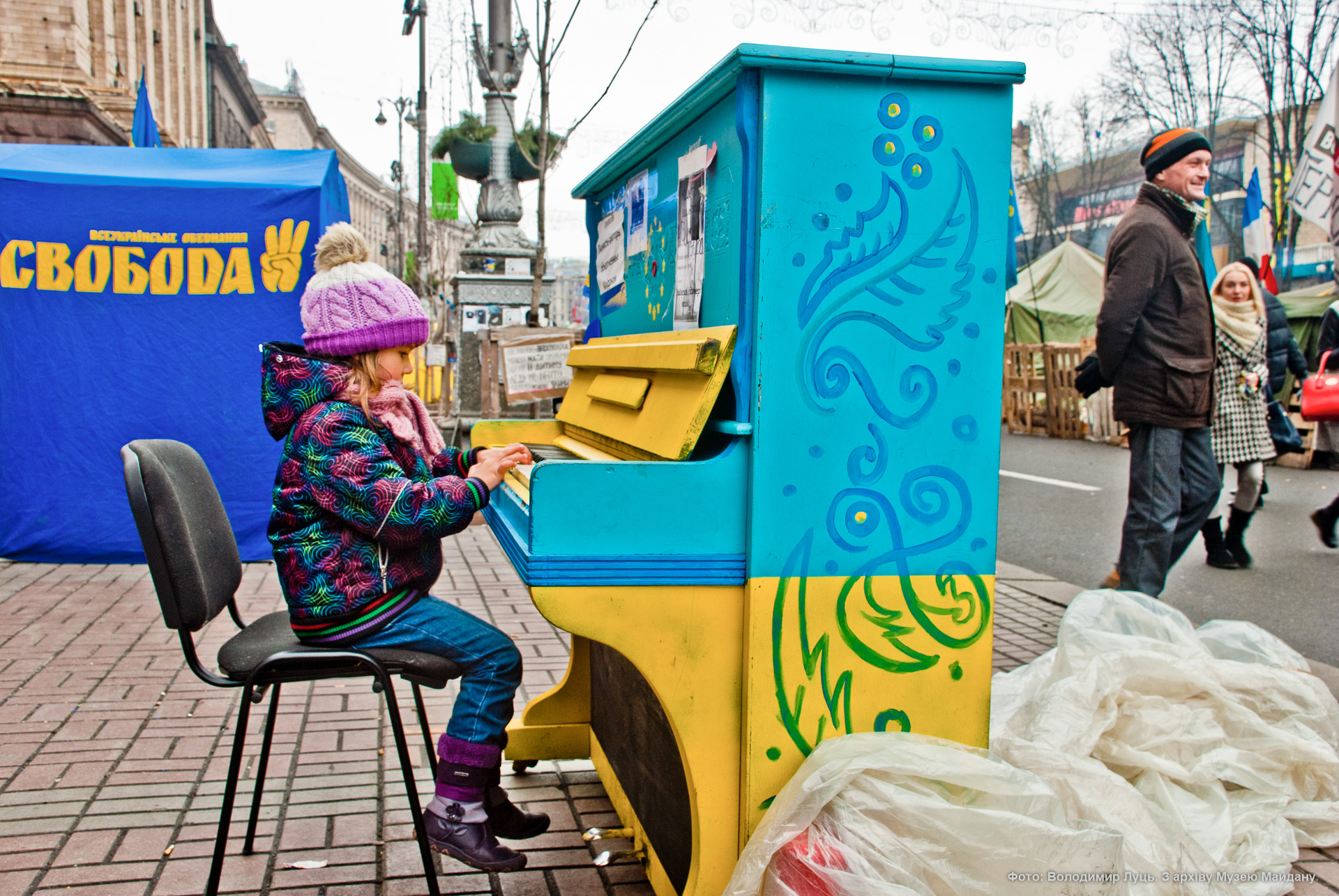


Art Barbican19-21 Khreshchatyk Street, opposite of 34 Khreshchatyk Street
A barbican is a small fortification that stands in front of the entrance to a large fortress, and it’s the first thing the enemy encounters. The Art Barbican was erected on December 21, 2013, on Khreshchatyk Street opposite the entrance to the Khreshchatyk metro station. The architect Dmytro Zhyla came up with the idea and a structure for the future fort. By his design, the Barbican was erected in a day: there were walls to shield from the wind, and a barrel inside to keep people warm. It was a place of continuous artistic protest. At all times, up to ten people were inside and would welcome anybody seeking warmth, rest, and a hot cup of tea.
The walls were decorated with posters of famous artists: Andriy Yermolenko, Ivan Semesiuk, Oleksa Mann, and others. There were also literary readings, where Yuriy Andrukhovych, Artem Polezhaka, Said Izmailov, Andriy Bondar, Svitlana Povaliaieva, Irena Karpa, Anton Mukharskyi, Ruslan Horovyi, and many others shared their works. There were lectures on the history of Judaism and Islam, as well as artistic debates. The Barbican became a cultural center for protesters who had the opportunity to join all the events and view the open-air exhibition.
However, with the beginning of the active phase of the confrontation in January 2014, Barbican turned into a kind of production workshop for Molotov cocktails. Barbican residents were preparing cocktails on the night of February 18-19 during the storming of Maidan.
Barbican became one of the most striking artistic phenomena of the Revolution of Dignity. It continued in several cultural projects after the Maidan victory. The works of Barbican artists are presented in the art collection of the National Museum of the Revolution of Dignity.
Як це було...
A memory from a participant of the events:
“Like my friends, I went there as if it was my job. Although why “as if”? It was my job to introduce Ukrainian contemporary art to Maidan participants, to everyone who passed by, who ran near our “artistic fortress.” I worked… in the editorial office of the Ukrainian Week magazine, and we wrote about the Maidan daily. I worked from sundown till sunrise, because all the major events happened at night. Any provocation or attempt of storming would come at night. For me and other artists, Barbican was a gathering place and a creative center of the Revolution of Dignity, where we came together, exchanged information, and prepared for possible night attacks and assaults.”
interview with Radio Liberty
(https://www.radiosvoboda.org/a/28934068.html)
Sign up for a tour
Сontacts
National Memorial Complex of the Heavenly Hundred Heroes - Museum of the Revolution of Dignity 9 Lavrska Street, building 20, Kyiv, 01015
+38 044 229 40 13 maidanmuseum@gmail.comOur socials:
«Terra Dignitas AR»
It is the first attempt to "revive" the Kyiv Maidan of 2013-2014 and recreate the image and spirit of the historical events of the Revolution of Dignity by means of augmented reality.
Your opinion is important to us. We need to hear from you both a kind word and constructive comments. This contributes to the improvement of our work.


